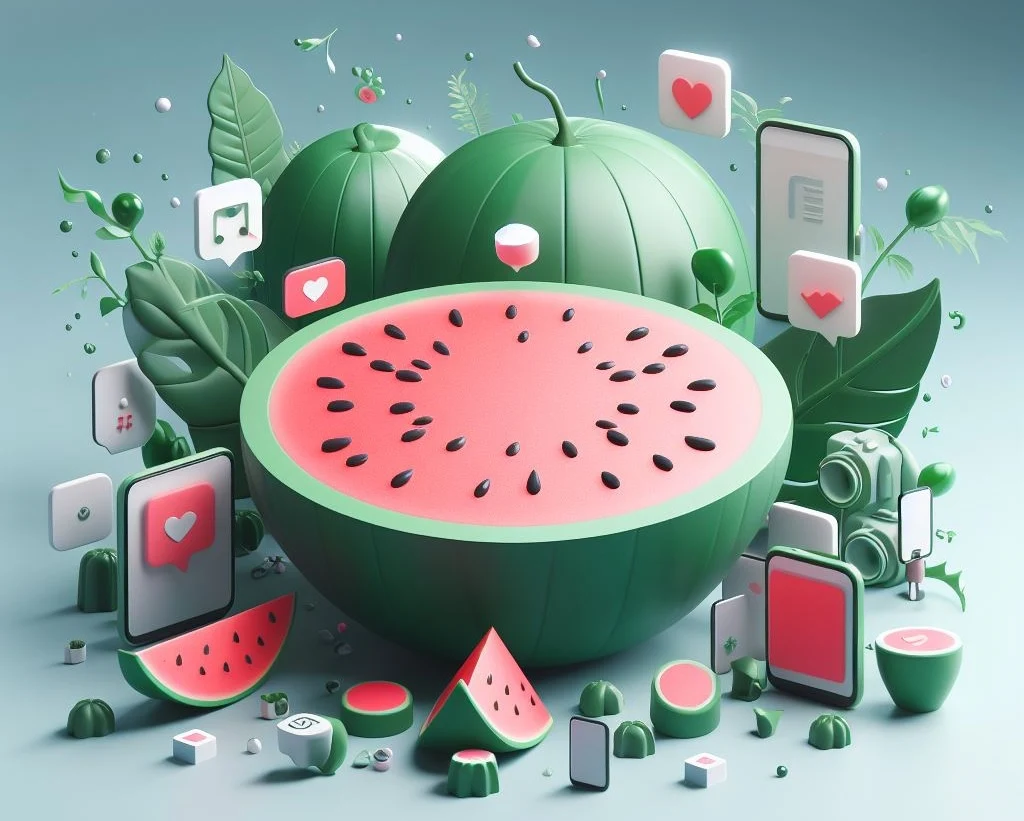The current conflict between Israel and Hamas has created a ripple effect that has spilled out onto various walks of life. It turns out that users on Instagram as well as TikTok have been using a longstanding symbol of Palestinian resistance the get the message across: the watermelon. This is used to replace mentions of Palestine and Gaza in their posts.
With all of that having been said and now out of the way, it is important to note that users are turning to the watermelon emoji as a way to circumvent perceived censorship against the cause. Much like the Palestinian flag, the watermelon contains red, green and black. This makes it easier to spread awareness about the plight of Palestinian people than might have been the case otherwise.
According to Palestinian health authorities, the Israeli governments retaliation against Gaza has led to the deaths of 10,000 people, many of whom are children with all things having been considered and taken into account. In spite of the fact that this is the case, hashtags and symbols representing Palestine have been suppressed by platforms like TikTok. While the platform denies doing anything of the sort, users continue to operate under the assumption that their voices are being stifled.
This is a pertinent example of a social media phenomenon known as “algospeak”. Users often swap words with emoji because of the fact that this is the sort of thing that could potentially end up allowing them to bypass algorithmic settings that can be difficult to work around, and it seems that the recent conflict has given rise to it yet again.
Another popular way to refer to Palestine without directly referencing it is the olive tree. It is a commonly used symbol of Palestinian resistance, although it has closer ties to the actual plight of people living under Israeli Occupation in the West Bank as well as the Gaza strip.
Palestinian culture places a lot of stock in olives, and watermelons are frequently used in their cuisine. With the Israeli government effectively banning all pro-Palestine demonstrations in 1967, people had to turn towards ever more creative methods to keep the fight alive, and it appears that this has now spread to social media as well. Israel responded by cracking down on Palestinian artists that used any kind of black, red and green in their artwork.
Photo: DIW
Read next: Leaker Signals Threads' Potential Expansion into EU Markets
With all of that having been said and now out of the way, it is important to note that users are turning to the watermelon emoji as a way to circumvent perceived censorship against the cause. Much like the Palestinian flag, the watermelon contains red, green and black. This makes it easier to spread awareness about the plight of Palestinian people than might have been the case otherwise.
— ꜱᴜᴇᴀɴɴᴀᴊᴏᴇ 〄 🏴☠️️ (@sueannajoe_) October 27, 2023
#FreePalestine #CeasefireForGazaNOW
— kurboi 🇵🇸 @ STICKERCON MNL (@kurb0i) November 6, 2023
I hope that the sun will shine again for our Palestinian friends. pic.twitter.com/IhOdYCMOlX
According to Palestinian health authorities, the Israeli governments retaliation against Gaza has led to the deaths of 10,000 people, many of whom are children with all things having been considered and taken into account. In spite of the fact that this is the case, hashtags and symbols representing Palestine have been suppressed by platforms like TikTok. While the platform denies doing anything of the sort, users continue to operate under the assumption that their voices are being stifled.
This is a pertinent example of a social media phenomenon known as “algospeak”. Users often swap words with emoji because of the fact that this is the sort of thing that could potentially end up allowing them to bypass algorithmic settings that can be difficult to work around, and it seems that the recent conflict has given rise to it yet again.
Another popular way to refer to Palestine without directly referencing it is the olive tree. It is a commonly used symbol of Palestinian resistance, although it has closer ties to the actual plight of people living under Israeli Occupation in the West Bank as well as the Gaza strip.
Palestinian culture places a lot of stock in olives, and watermelons are frequently used in their cuisine. With the Israeli government effectively banning all pro-Palestine demonstrations in 1967, people had to turn towards ever more creative methods to keep the fight alive, and it appears that this has now spread to social media as well. Israel responded by cracking down on Palestinian artists that used any kind of black, red and green in their artwork.
Photo: DIW
Read next: Leaker Signals Threads' Potential Expansion into EU Markets

